B.G. Nettelton's Blog
September 5, 2025
My Father's Diamonds: A Legacy of Danger in 1960s Lesotho
The world’s most magnificent diamonds are often found in places of breathtaking beauty. And brutal hardship.
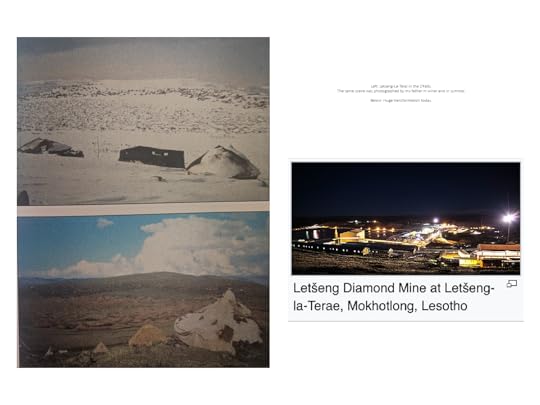
This is the world my father, Spencer 'Ted' Nettelton, occupied as a District Commissioner in 1960s Lesotho, a nation on the brink of independence, grappling with a Wild West-style diamond rush in its remote mountain peaks. Drawing directly from his published memoirs, my upcoming romantic suspense novel, Diamond Mountain, explores this volatile history through a story of high-stakes love, illicit gems, and impossible choices.
But what of the place itself, the real ‘Diamond Mountain’?
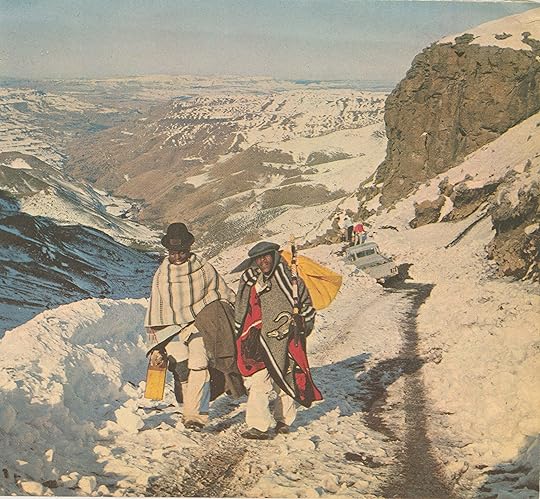
The name I chose for my novel is fictional, but its inspiration, Letseng le Terai (meaning “the swamp/turn by the graveyard” in Sesotho), is very real and its history is as dramatic as any thriller.
Located over 3,100 metres (more than 10,000 feet) up in the harsh, windswept Maluti Mountains of Lesotho, it is one of the highest diamond mines in the world. The air is thin, and winter temperatures plummet to bone-chilling lows. Long before it became the high-tech, globally significant mine it is today, Letseng le Terai was a place of raw hope and desperate gambles.
Its story as a diamond source began in the late 1950s when prospector Colonel Jack Scott was granted a concession. However, it was the period my father knew—the 1960s—that saw the area transform into a rugged, high-altitude frontier. Following the discovery of diamonds, thousands of local Basotho diggers flocked to the site, enduring primitive conditions to work small, private plots with little more than hand tools. It was a diamond rush in one of the most inaccessible places on earth.
This was the world my father stepped into as a District Commissioner. His diaries speak of the immense challenge of administering this remote area, where the promise of instant wealth created a volatile mix of hope, rivalry, and crime. The illicit diamond buying (IDB) he was tasked with investigating wasn't just a matter of clerical work; it was a high-stakes cat-and-mouse game played out on treacherous mountain roads and in isolated villages, often involving shadowy international syndicates. His notes capture the tension of trying to impose colonial law on a centuries-old way of life, all while navigating the complex politics of a nation on the brink of independence in 1966.
Letseng-la-TeraiThe landscape of both the diggings and the country was on the cusp of monumental change. The era of small-scale, independent diggers was slowly giving way to the interests of global consortiums. Over the decades that followed, giants like De Beers would take an interest, and eventually, the mine would be developed by Gem Diamonds into the powerhouse it is today.
Yet, the mountain held its secrets. It wasn’t the quantity of diamonds that made Letseng le Terai legendary, but their extraordinary quality and size. It has a reputation for yielding some of the largest and most flawless diamonds the world has ever seen, including the 603-carat Lesotho Promise and the 910-carat Lesotho Legend.
This potent history—of immense wealth unearthed from unforgiving earth, of traditional life colliding with global capital, and of the constant struggle for control—is the bedrock of Diamond Mountain. The raw, untamed nature of the 1960s diggings provided the perfect setting for a story about risk, forbidden passion, and the moral compromises people make when survival is on the line. It’s a world where the gleam of a diamond can blind you to the danger in the shadows, and where the highest peaks can hide the deepest secrets.
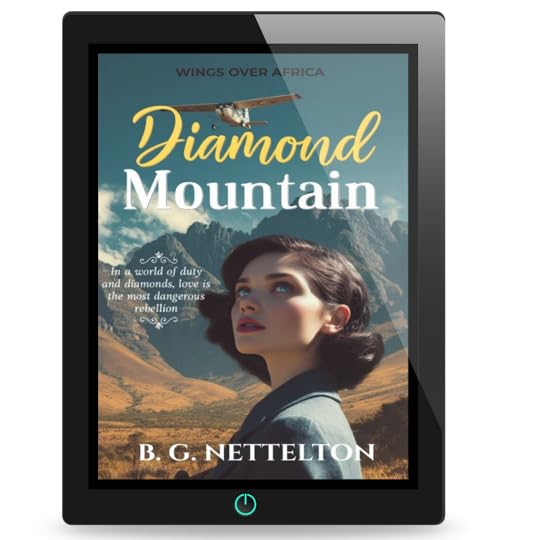
August 24, 2025
Writing Romance in the Wilderness: Why Africa Makes the Perfect Backdrop for High-Stakes Love
— By B. G. Nettelton
Romance doesn’t always arrive with candlelight and violin music. Sometimes it lands you—literally—in the middle of nowhere, with lions on the horizon and a pilot in khaki extending a hand.
I didn’t expect to find love in Africa. In fact, I was running from it.
After a rocky chapter in an eight-year relationship back in Australia, I convinced myself that a return to the country of my father’s birth might offer clarity. I’d recently discovered my grandfather’s pictorial diaries from the 1920s—snapshots of a bygone colonial world that called to something deep within me.
What began as a personal pilgrimage turned into something much more life-altering.
Because it wasn’t long before I met the handsome, capable bush pilot whose rugged charm proved far more compelling than any safe life I’d left behind. The wilderness rewrote the story I thought I was living—and within weeks, I was delighted by a marriage proposal.
That raw, unpredictable intensity—the way life can change in a heartbeat under Africa’s vast skies—is at the heart of every story I write in my Wings Over Africa series.
Love, Danger, and the Untamed LandscapeThere’s something about the African wilderness that amplifies everything: risk, emotion, desire. Whether it's the roar of lions outside your tent, or the uncertainty of a dirt airstrip landing, the stakes are always high.
That intensity translates perfectly into fiction.
In Whispers in the Kalahari, a struggling marriage is tested in the dry heart of Botswana, as secrets and danger stir beneath the red sands. In Diamond Mountain, forbidden love blossoms at 11,000 feet in the snow-dusted peaks of Lesotho, where political intrigue and colonial tensions mirror the heroine’s internal conflict. Even in the prequel novella Shadows over the Okavango, set in a remote safari camp, passion simmers alongside peril as a woman fleeing emotional control must decide whether the man who tempts her is her rescuer or her captor.
Romance Rooted in RealityWhat sets these stories apart isn’t just the romance or the suspense—it’s the grounding in real places and experiences. I’ve felt the dry wind of the Kalahari, watched a baby giraffe being born beside a camel-thorn tree, and skimmed over ilala palms in a Cessna to frighten a pride of lions from the dirt runway.
These aren’t just postcard-perfect settings—they’re alive with dust and thunder and history. The perfect place to test a character's mettle—and heart.
Why the Wild WorksIn romantic fiction, setting is more than scenery. It’s a mirror. It reflects a character’s fear and hope, and it strips them bare. The African wilderness—with its stark beauty, its unpredictability, and its demand for courage—forces my characters to confront what they truly want. There’s no room for pretence when your survival (or your happiness) is on the line.
And sometimes, in the wildest places, you find not just the truth—but the love story you never saw coming.
August 5, 2025
My Author's Note to Diamond Mountain
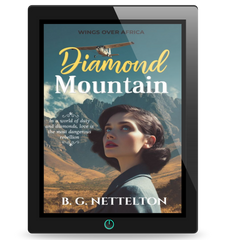
I have just finished writing 'The End' for Diamond Mountain but instead of breaking open the champagne - becausee it's only 11.30am and I'm alone - I've just crafted my Author's note.
Here it is:
Diamond Mountain was born from twelve years of helping my father, S.E. “Ted” Nettelton, craft his memoirs of his time serving as District Commissioner in Lesotho during the early to mid-1960s. Dad investigated the very crimes that form the backbone of this novel—illegal diamond buying and medicine murder—before becoming Private Secretary to Lesotho’s first democratically elected Prime Minister, Chief Leabua Jonathan.
I was born in this African mountain kingdom, spending my earliest years in Mokhotlong, perched near the treacherous Sani Pass that features so prominently in Stuart’s flying scenes. My first memories are of my Mosotho nanny, Francina, and playing with her children—Mpho, Moeketsi, and “Anne-Bubba”—all of whom appear in these pages. The airfield really was at the bottom of our residence, and those small planes were indeed our lifeline to the outside world.
During those years helping Dad with his manuscript, Working in the Colonial Service in Lesotho in the 1960s, I absorbed not just the dramatic events he recorded—complete with newspaper clippings and official correspondence—but the smaller details that bring an era to life: the logistics of mountain transport, the delicate politics of a territory preparing for independence in 1965, and the daily realities of life in what was then known as “The Empire’s remotest outpost.”
Dad often spoke of those fraught yet exhilarating years leading to Lesotho’s democracy, when he organized the independence celebrations and navigated the complex tribal and political tensions of a changing Africa. These stories, combined with my mother’s own memories of some of their happiest years, shaped not just this novel but my understanding of the adventurous spirits that are thoroughly entrenched in my DNA.
Diamond Mountain is my tribute to both my parents and to the remarkable people of Lesotho who welcomed our family into their mountain kingdom.
We were children of Africa, our roots running deep through generations—Dad born in Botswana, his father born in Lesotho before moving during the Boer War so his own father could head the newly established Bechuanaland Police Force on Chief Khama III’s recommendation.
Dad’s posting was, in many ways, a homecoming, and the people of Lesotho, in embracing our family, gave me not just memories but a legacy to be proud of.
- Writing as B. G. Nettelton
July 30, 2025
The British Child Evacuee Who Inspired DIAMOND MOUNTAIN'S hero
How my family's wartime guests became the heart of my new romantic suspense novel
When History Becomes FictionIn my upcoming novel Diamond Mountain (releasing September 30), I've woven together the authentic threads of my parents' lives to create a story that's as compelling as it is true to history. While my father's investigations into diretlo (medicine murder) and illegal diamond buying in 1960s Lesotho provide the mystery's backbone, the personal journey of my hero, Stuart Price, springs from a remarkable chapter of my family's wartime story.
Three Children Who Changed EverythingMy mother, growing up in Pretoria, South Africa, was just eleven when Jean, Peter, and Michael arrived at the Cape Town docks in 1940. My grandparents—he a gentle lawyer, she a privileged woman of her times—had intended to take in one British child evacuee. Instead, they came home with three siblings from London's Seven Dials, as they couldn't bear to separate the children.
But the newcomers were clearly used to pitched, physical battles and my mother's usually harmonious family home erupted into chaos. The evacuees' battles were so disruptive that the eldest, twelve-year-old Jean, begged to be sent to boarding school—at my grandparents' expense. Meanwhile, my mother attended the local government school while her brother Tony was educated at Hilton, one of South Africa's premier boys' schools.
(On a side note, Jean grew up to become a keen equestrian jumper and a friend to Princess Anne.)
The Forgotten Evacuation: Britain's Children in South AfricaDiamond Mountain draws on this lesser-known chapter of WWII history. While most people know about the London Blitz evacuations to the British countryside, few realize that thousands of British children were sent to the Dominions—Canada, Australia, New Zealand, and South Africa—to escape anticipated bombing.
Winston Churchill's government formalized this through the Children's Overseas Reception Board (CORB) in June 1940. The initiative aimed to give working-class children the same safety opportunities that wealthy families were already purchasing privately.
Voyages of Hope and TragedyShips like the SS City of Paris and SS City of Simla carried these young passengers across dangerous waters patrolled by German U-boats. The program's darkest moment came on September 17, 1940, when the SS City of Benares was torpedoed en route to Canada, killing 77 of 90 child evacuees aboard.
Yet remarkably, all 353 children sent to South Africa under the CORB scheme arrived safely—including the three who would profoundly impact my family and, decades later, inspire the character at the heart of my novel.
From Separation to StoryThese evacuees remained with their South African families for up to six years, becoming teenagers shaped by African landscapes and experiences far from their London origins. When they finally returned to Britain in 1945-46, they left behind the families who had raised them and returned to a war-scarred homeland and relatives they barely remembered.
This profound experience of displacement, adaptation, and divided loyalties forms the emotional core of Stuart Price's character in Diamond Mountain. Like my family's evacuees, Stuart carries the weight of belonging to two worlds: in his case, working for his conman father in London's gritty East End—and the genteel privilege of middle class Pretoria.
Where History Meets RomanceDiamond Mountain releases September 30th as the second novel in my Wings Over Africa series. Set against the backdrop of 1960s Lesotho, the African mountain kingdom that was on the cusp of democracy — it combines authentic historical events with passionate romance and deadly intrigue. Stuart's story—rooted in real evacuee experiences—proves that sometimes the most compelling fiction comes from the extraordinary truths hidden in family history.
Discover how wartime separation shapes a man's destiny in Diamond Mountain, available September 30th. Pre-order now and step into a world where love, loyalty, and survival collide in the heart of Africa.
The Real Story Behind Diamond Mountain: British Child Evacuees Who Inspired My Hero
How my family's wartime guests became the heart of my new romantic suspense novel
When History Becomes FictionIn my upcoming novel Diamond Mountain (releasing August 31st), I've woven together the authentic threads of my parents' lives to create a story that's as compelling as it is true to history. While my father's investigations into diretlo (medicine murder) and illegal diamond buying in 1960s Lesotho provide the mystery's backbone, the personal journey of my hero, Stuart Price, springs from a remarkable chapter of my family's wartime story.
Three Children Who Changed EverythingMy mother, growing up in Pretoria, South Africa, was just eleven when Jean, Peter, and Michael arrived at the Cape Town docks in 1940. My grandparents—he a gentle lawyer, she a privileged woman of her times—had intended to take in one British child evacuee. Instead, they came home with three siblings from London's Seven Dials, as they couldn't bear to separate the children.
But the newcomers were clearly used to pitched, physical battles and my mother's usually harmonious family home erupted into chaos. The evacuees' battles were so disruptive that the eldest, twelve-year-old Jean, begged to be sent to boarding school—at my grandparents' expense. Meanwhile, my mother attended the local government school while her brother Tony was educated at Hilton, one of South Africa's premier boys' schools.
(On a side note, Jean grew up to become a keen equestrian jumper and a friend to Princess Anne.)
The Forgotten Evacuation: Britain's Children in South AfricaDiamond Mountain draws on this lesser-known chapter of WWII history. While most people know about the London Blitz evacuations to the British countryside, few realize that thousands of British children were sent to the Dominions—Canada, Australia, New Zealand, and South Africa—to escape anticipated bombing.
Winston Churchill's government formalized this through the Children's Overseas Reception Board (CORB) in June 1940. The initiative aimed to give working-class children the same safety opportunities that wealthy families were already purchasing privately.
Voyages of Hope and TragedyShips like the SS City of Paris and SS City of Simla carried these young passengers across dangerous waters patrolled by German U-boats. The program's darkest moment came on September 17, 1940, when the SS City of Benares was torpedoed en route to Canada, killing 77 of 90 child evacuees aboard.
Yet remarkably, all 353 children sent to South Africa under the CORB scheme arrived safely—including the three who would profoundly impact my family and, decades later, inspire the character at the heart of my novel.
From Separation to StoryThese evacuees remained with their South African families for up to six years, becoming teenagers shaped by African landscapes and experiences far from their London origins. When they finally returned to Britain in 1945-46, they left behind the families who had raised them and returned to a war-scarred homeland and relatives they barely remembered.
This profound experience of displacement, adaptation, and divided loyalties forms the emotional core of Stuart Price's character in Diamond Mountain. Like my family's evacuees, Stuart carries the weight of belonging to two worlds: in his case, working for his conman father in London's gritty East End—and the genteel privilege of middle class Pretoria.
Where History Meets RomanceDiamond Mountain releases August 31st as the second novel in my Wings Over Africa series. Set against the backdrop of 1960s Lesotho, the African mountain kingdom that was on the cusp of democracy — it combines authentic historical events with passionate romance and deadly intrigue. Stuart's story—rooted in real evacuee experiences—proves that sometimes the most compelling fiction comes from the extraordinary truths hidden in family history.
Discover how wartime separation shapes a man's destiny in Diamond Mountain, available August 31st. Pre-order now and step into a world where love, loyalty, and survival collide in the heart of Africa.
July 27, 2025
Born into Adventure: My Journey from Regency Romance to African Mystery
I was born into a family of adventurers.
My great-grandfather owned a gold mine in Botswana; my grandfather mapped the tsetse fly belt in the Okavango before being appointed to the committee that banished Botswana's future President, Seretse Khama, for marrying white woman Ruth Williams; my uncle was trampled to death by an elephant in Tanzania while hunting alone; and my father investigated 'diretlo' (medicine murder) and illegal diamond trading in 1960s Lesotho.
So, being a romantic suspense author, of course the time would finally come to leave the Napoleonic wars, Regency ballrooms, and Victorian-era Mayfair brothels behind so I could do literary justice to the adventure written into my DNA.
From Regency to the Real AfricaI now write murder mysteries and love triangles set in the heart of Africa, based on a lifetime of hearing family stories—stories which sent me on a journey of discovery from my new home in South Australia back to Botswana, where I found myself in the middle of my own love story. One that had me living in Botswana and Namibia with the handsome Norwegian bush pilot I met when I was a safari hostess managing luxury lodges in the Okavango.
Coming Home Through FictionIn one month, Diamond Mountain will transport readers to the remote highlands of Lesotho, where my father's real investigations into medicine murder and diamond smuggling provide the authentic backbone for Philippa Tremain's dangerous journey. It's a story only I could tell—because I lived it, breathed it, and carry it in my very bones.
July 2, 2024
From Journalism to African and Aviation Adventures: A Writer's Journey
By Beverley Eikli (writing as B. G. Nettelton)
For years, I've been encouraged to write my memoirs, but I've always found my creative outlet in historical fiction and romance. It's easy to overlook the excitement of your own life when you're busy crafting stories for others.
However, things are changing. After publishing 35 titles under various pen names and becoming more aware of my own mortality, I'm taking steps to document my life's adventures.
While I'm not quite ready for a straightforward memoir, my new Africa-set series blends fact and fiction. These books, filled with romance, adventure, mystery, and murder - all featuring a handsome bush pilot - draw heavily from my own experiences. In many ways, they're becoming the closest thing to a memoir I've written yet.
My Memoirs Infuse My FictionIn August, 2024, Whispers in the Kalahari: Secrets, Survival, and Self-discovery in 1980s Africa, will be released under my new pen name (and maiden name) – B. G. Nettelton.
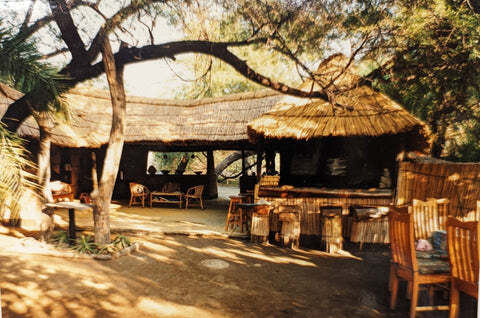
It’s the closest work to date that comes close to documenting my life, growing up in Africa and working around the world in the aviation industry.
While the book isn’t strictly autobiographical, there are many themes and events in the book that shaped my life and which is coloured by my perspective:
The divisive 1989 Australian Pilot’s DisputeManaging a safari lodge in Botswana’s beautiful Okavango DeltaWorking as a journalist in Australia in the 1980sHunting in BotswanaFamily Roots in the Kalahari: Inspirations from ChildhoodGrowing up in South Australia, I was always drawn to the countries I left as a child, where my forebears lived: Botswana and Lesotho.
My father was born and brought up in Botswana and I’d grown up with his stories of an unfettered childhood in the remote desert region near Serowe where the family was stationed for a number of years.
He was given his first shotgun when he was nine and allowed to roam the Kalahari with his brother, Gerald, two years older. The family regularly went out bush camping together during the weekends, the boys shooting for the pot, in between boarding school in Cape Town and my grandfather’s duties in the British Colonial Administration.
Grandpa had spent much of his childhood mixing with the local Batswana children so was fluent in Setswana. This understanding of the people, through their language, added an extra element of interest to the photos and captions of the diary he kept during his years—travelling mostly alone on a donkey-- mapping the tsetse fly between 1916 and 1922. As tsetse fly causes sleeping sickness in many animals, including cattle and horses, he travelled thousands of kilometres during treks of up to five months, on a donkey that was immune to sleeping sickness, or in a Scotch Cart.
The Diary that Changed Everything: Discovering BotswanaIt was the discovery of this diary when I was 27, which led me to take leave from my job as a journalist on a South Australian metropolitan newspaper—first to go on holiday, and then to work at several safari lodges operated by then Okavango Wilderness Safaris.
Until my arrival in Botswana’s dusty frontier town of Maun, gateway to the beautiful Okavango Delta and a major setting in Whispers in the Kalahari, I’d never met a pilot.
But the handsome bush pilot I met the day before I was due to fly home to marry my stockbroker boyfriend of seven years, fated me to spend the rest of my life amongst planes—and gorgeous men.
Love and Aviation: How a Bush Pilot Altered My PathYes, I married Eivind, remained with him in Botswana working in the safari industry for some time, and then began a five-year stint as an airborne geophysical survey operator in the back of low flying aircraft on three-month contracts in Namibia, French Guiana, Greenland, Sweden and other countries.
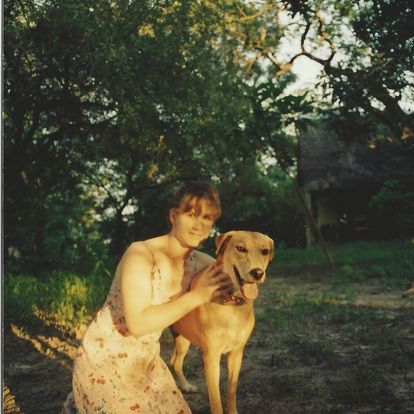
Often the only woman on crew, and not always working on location with my husband, I turned to writing romance as a diversion, though my fellow crew were a wonderful bunch and many of the friendships I forged during that time that have lasted decades.
Balancing Acts: Juggling Family, Flying, and WritingWhile my journalism career took a backseat to my husband's through international moves, child-rearing, and the ups and downs of general aviation - including the folding or voluntary administration of operators like Ozjet, Virgin's international fleet, Bonza, and Vanuatu Airlines - these experiences fueled my budding writing career.
"Whispers in the Kalahari": Fiction Meets RealityWhispers in the Kalahari (which is the new title for my work-in-progress Shadows over the Delta, as shown here) is seen largely from the perspective of my protagonist, Verity. Married to James, a pilot whose career has seen them relocate from multiple Outback Australian towns, both James and Verity are about to realise their individual ambitions when James gets a job on a Boeing 737 for Ansett and Verity becomes editor of a glossy magazine.
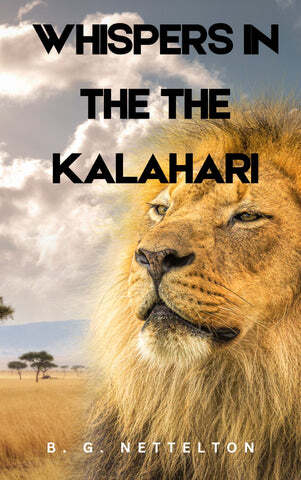 A mockup of the new cover and title. I had to change both because the story became centred around Deception Pan in the Kalahari and featured a lion rather than a giraffe.
A mockup of the new cover and title. I had to change both because the story became centred around Deception Pan in the Kalahari and featured a lion rather than a giraffe.
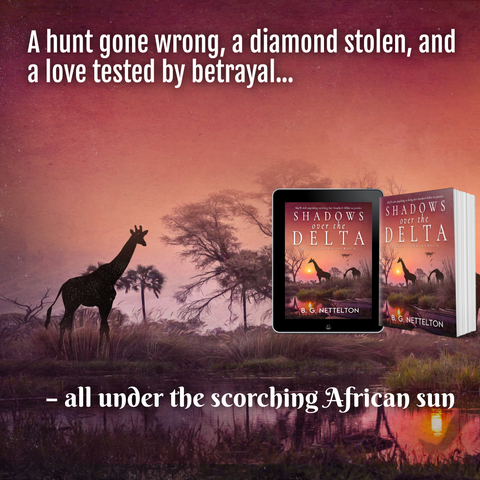
And then the 1989 Australian Pilot’s Dispute ruins everything.
With the mass resignation of 1600 pilots, cancellation of their award and de-recognition of their union, there is no flying job for James in Australia.
And so, he takes the only job offer he can get: flying Cessna 206s in the safari industry in the Okavango Delta, taking with him his devastated wife and their rebellious fifteen-year-old, Saskia.
My book delves into the divided loyalties of pilots – colleagues and families – during that divisive time, before situating the action in Botswana, a landscape I came to love…though it’s a long time before Verity comes to love it. And that’s only after she’s embroiled in a fifteen-year-old hunting death which gains momentum, and danger, after she takes a job as hostess on an overland safari for charismatic hunter, Starky Willis.
A man some claim is the real killer of James cousin, Mike, fifteen years before.
Beyond the Page: Real Experiences in African LandscapesSo, this book, fiction though it is, touches of many aspects of my life, and brings to life some of the wonderful experiences I’ve been lucky enough to enjoy, first hand.
June 11, 2023
Growing up with a Disability in Africa at the top of the Sani Pass
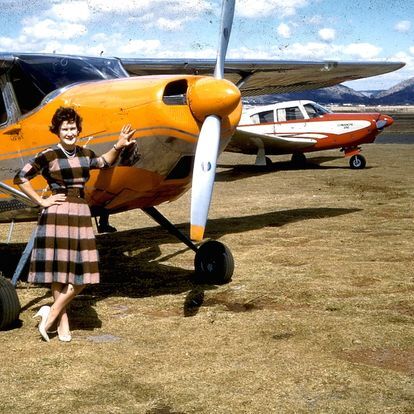
[image error]
Sani Pass on descent from Kotisphola down to the Sehonghong river
By Beverley Eikli(writing as B. G Nettelton for my Africa-set romantic suspense novels).
My earliest memories are of mountains and small planes.
And of regular hospital visits which meant difficult journeys from our home in Lesotho’s mountainous Mokhotlong district to Grey's Hospital in Pietermaritzburg, Kwa Zulu-Natal, across the border in South Africa.
I was born with a condition known today as hip dysplasia. While detection and correction are simple in the modern era, my "congenital dislocation of the hip," as it was called back then, went unnoticed until I was over 15 months old. That delay in diagnosis had huge ramifications for me and my family.
Early Days in Lesotho: Mountains and Medical ChallengesAt that time, I was the only child of my parents, living in a remote and mountainous region of Lesotho and my inability to walk did not raise concerns until a family friend visiting my mother suggested that something might be wrong.
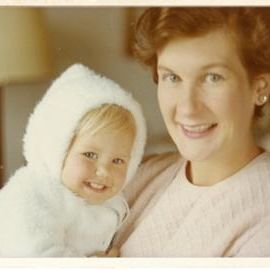
Mum with me as a baby
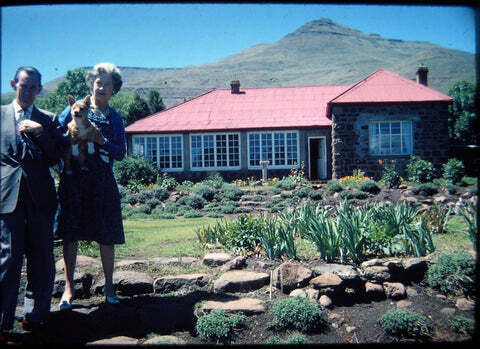
My granny and grampa Turner at our house in Mokhotlong
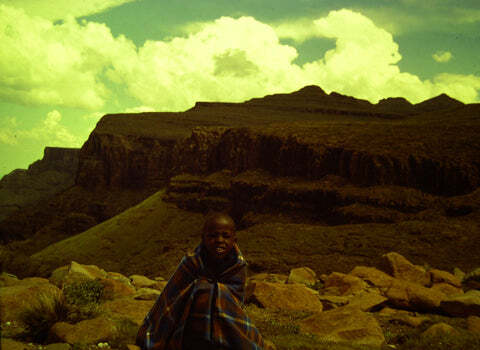
A young herd boy in the mountains near our home.
Lesotho's Independence and My Father's Role
During the months leading up to my birth in 1965, my father had been occupied with organizing Lesotho's Independence Celebrations. These were strategically scheduled for the following year to coincide with international heads of state coming to Africa for Botswana's Independence celebrations, which would be held a week earlier. They would therefore attend Botswana's Independence Celebrations on September 30, followed by Lesotho's on October 4.
While my father managed a tight budget to execute this vibrant and ambitious event to showcase national pride and the emergence of a new nation, my mother, like any expectant mother, was preparing for the arrival of a new baby.
Traversing the Treacherous Sani PassHowever, travelling by road from home in Mokhotlong to medical check-ups across the border in South Africa was not a viable option for a pregnant woman.
The difficult 40 miles journey from Mokhotlong to the top of the Sani Pass took three hours in a 4x4 land rover in the mid 1960s. And then there was the treacherous descent down the Sani Pass to navigate.
So mum generally flew by light aircraft from the bottom of our garden.
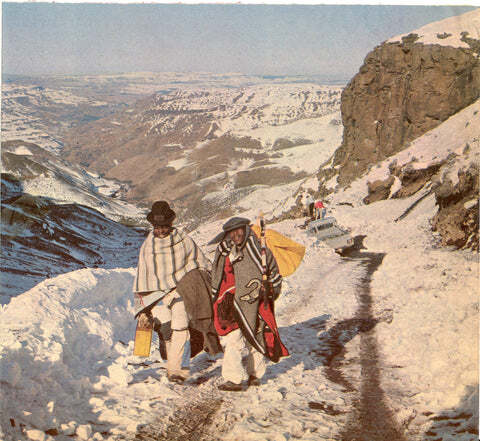
Locals on the Sani Pass
The Journey to Treatment: From Lesotho to South Africa
In those days, there were few roads in Lesotho's mountainous region. Much of my father's work required him to embark on treks that spanned several days, riding a sturdy Basuto pony along narrow and rocky bridle paths with steep ravines on one side. In winter, he would traverse snow-covered plains and passes.
The Sani Pass, which was constructed in the early 1950s, was, arguably, one of the world's most treacherous mountain passes during the 1950s and 60s when my parents frequently navigated its steep gravel gradients, some as high as 1:4.
The pass traverses the Great Escarpment of southern Africa at its highest point along the Drakensberg Mountains. Starting from 1,544 meters (5,066 ft), it ascends 1,332 meters (4,370 ft) over a distance of 9km, connecting the South African border control near Himeville to Lesotho Border Control at the pass's summit.
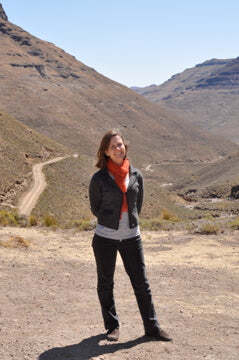
Me on the Sani Pass in 2010
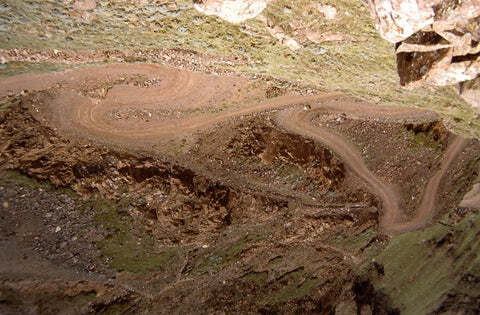
Twists and Bends on Sani Pass
During my last visit to my childhood home in 2010, significant upgrades had been made to the Sani Pass. Nevertheless, the remnants of vehicles that had failed to negotiate its steep slopes and slippery surfaces served as a reminder to exercise caution, especially during winter when driving conditions become even more hazardous due to snow and ice.

The Sani Pass taken from above during one of dad's plane trips in the 60s.
So, I grew up on top of the world in what was known as "The Colonial Empire's Remotest Outpost" surrounded by majestic mountains.
In my upcoming book, Diamond Mountain, my protagonist Philippa, daughter of Mokhotlong's District Commissioner, finds herself torn between her love for the rugged Maluti Mountain range that surrounds her home and the grandeur of Table Mountain in cosmopolitan Cape Town, where she is studying.
These two mountains symbolize the romantic dilemma she faces, choosing between the adventurous bush pilot she loves and the affluent society lawyer who offers her the life she believes she’s always wanted.

Cover of Diamond Mountain by B G Nettelton, a romantic suspense novel set in Lesotho, Africa
You can read more HERE.
But I digress. Let's return to my story.
Once I was diagnosed with a lack of hip cup, which made walking either impossible or very painful, the doctors at Grey's Hospital suggested that my parents place me in a Crippled Children's Home in South Africa due to the difficulty of travelling for hospital visits.
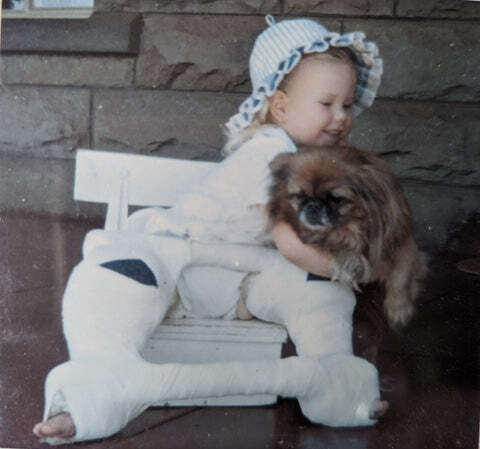
Me in a plaster cast with mum's Pekingese, Lilibet
However, I had everything I really needed in Mokhotlong – loving parents and three household staff, including my beloved and wonderful nanny, Francina, who stayed with our family for many years until we emigrated to Australia. Her children, Mpho, Muketsi, and Ann Bubba, were my playmates in our beautiful garden overlooking a lovely dam with mountains as our backdrop.
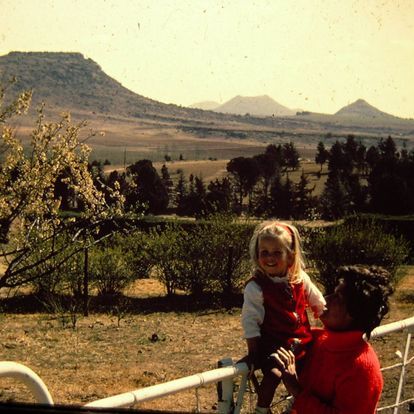
Mum and me in our back garden in Mokhotlong

My nanny Francina with my sister, T.
I tried unsuccessfully to find Francina when I returned to Lesotho in 2010.
Both Francina and Mpho appear in my story, Diamond Mountain, albeit in fictionalized forms. Mpho plays a heroic role during a mob uprising triggered by a dispute over illegal diamond buying, which my father investigated as part of his work. Many of the events in Diamond Mountain are inspired by dad’s memoirs, "Working in the Colonial Service in Lesotho in the 1960s” by Spencer “Ted” Nettelton.
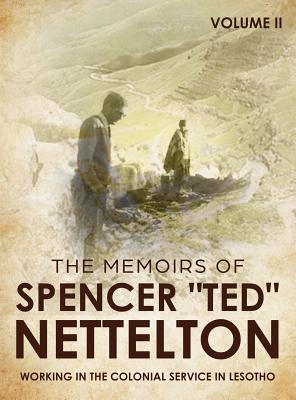
So, while placing me in a Home in South Africa was dismissed, so was relocating there due to South Africa's abhorrent Apartheid policy. Lesotho, my African mountain kingdom home, was geographically enclosed by South Africa, but Apartheid was the official racist policy of South Africa’s Nationalist government between 1948 and 1994.
Lesotho was first a British Protectorate before it became an independent African country on October 4, 1966, and while my parents would travel into South Africa for medical treatment, they’d never consider living there.
My father, who had been born and brought up in Botswana--another British Protectorate before Independence in 1966--had been sent to Lesotho (then Basutoland) in 1952 as a young District Officer working in the British Colonial Service.
So we remained in Lesotho which meant regular, arduous hospital visits across the border to have my waist-to-toe frog-leg plaster removed with terrifyingly large clippers, before it was replaced by fresh waist-to-toe plaster.
We would either fly out in a Cessna 172 from the Mokhotlong airfield, which was conveniently located at the bottom of our garden through a small metal gate, or travel down the Sani Pass in dad’s short wheelbase Land Rover.
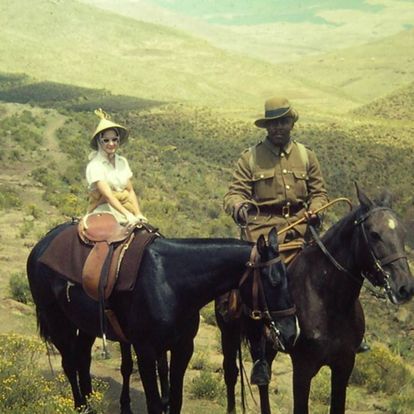
Mum on trek in Lesotho
Despite the constraints of my plaster, I was an active child. I would quickly wear through the carpet squares my parents placed over the knees of my plaster as I dragged myself up and down stairs. To this day, I possess considerable upper body strength.
Later, when we moved to Australia, I was encased in a more linear type of plaster which made it much easier to get around. With wheels that dad attached to a surfboard, I was able to reach great speeds and, for the first time, outpace my younger sisters and peers.
Of course, none of the various plaster contraptions worked. The only solution to enable proper mobility was a successful operation to form a hip socket. And this had not yet been pioneered.
A Royal Appointment: The MBE and a Trip to LondonWhen I was two years old, my father received an MBE (Member of the Most Excellent Order of the British Empire) for his efforts in organizing the Independence Celebrations. It was therefore decided that our family trip to the UK for dad's investiture at Buckingham Palace would include a visit to the world's leading children's orthopaedic surgeon.
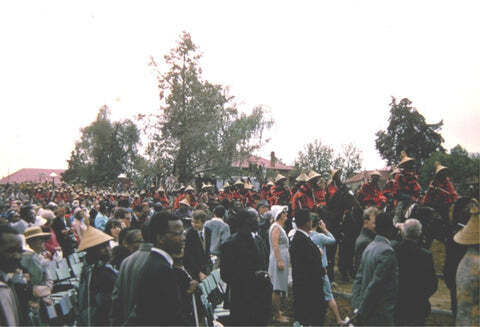
Lesotho on Independence Day, October 4
I remember mum saying that this surgeon was very condescending and refused her request to reschedule her appointment with him until she informed him of the clash with my father's investiture.
Dad’s Investiture was, by all accounts, exciting and rewarding, but my visit to the orthopaedic surgeon in the UK was disappointing after he initially agreed to perform an operation, but then unexpectedly reneged.


Granny, dad and mum at Buckingham Palace, in London, for his Investiture
So, we returned to Lesotho, with me wearing yet another peculiar, ultimately useless, leather waist-to-toe contraption adorned with numerous metal buckles.

A plane that came to grief and remained for a long time in the airfield near home.
Returning Home: New Challenges and Changes
Nothing changed significantly for me, but there were exciting changes afoot for the country, and for my family.
Lesotho gained its Independence and dad became Secretary to the country’s first democratically elected Prime Minister, Leabua Jonathan. He travelled to the US with the PM for Leabua’s Maiden Speech to the United Nations staying at Blair House where dad and Leabua were guests of then US President Lyndon B. Johnson.
Dad’s new job also meant a relocation to the capital, Maseru, where we lived in a beautiful stone house with different mountain views. I no longer wore plaster casts which had failed to produce the desired result; however, walking was painful as my hip was always slipping out of joint.
From Lesotho to Australia: A New BeginningFinally, my parents felt the time had come to leave Lesotho, deciding upon a new life in Australia.
So, with dad’s “Golden Handshake” payout, we spent our first six months living on Lord Howe Island, a tropical paradise just off the coast of New South Wales. We flew there in in a Shorts Sunderland Flying Boat – another exciting flying experience as the islanders rowed out to welcome us and placed floral lays about our necks.
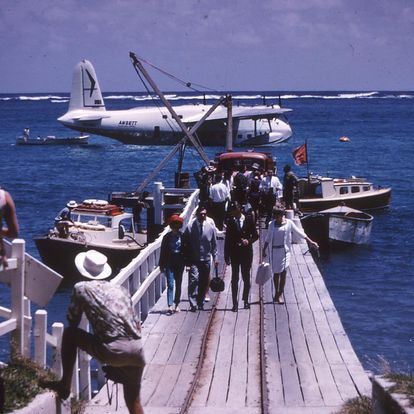 Arriving on Lord Howe Island on a Sunderland Short. When we returned 18 months later, I cried with disappointment that the days of flying boats had ended now that Lord Howe had a 'boring' runway.
Arriving on Lord Howe Island on a Sunderland Short. When we returned 18 months later, I cried with disappointment that the days of flying boats had ended now that Lord Howe had a 'boring' runway.
By the time I was seven, our family had settled in Adelaide, South Australia. I could walk, but not without pain and difficulty, so, my parents took me to the Royal Children's Hospital to visit a visionary children's orthopaedic surgeon named Dr. Dennis Patterson.
The Miracle Operation: Meeting Sir Dennis PattersonHe asked for permission to perform his ground-breaking operation, confident of a successful outcome based on his recent successful trials of the procedure on dogs' hips and my parents agreed.
As well as being a huge success, the operation was a “world-first” and my surgeon became Sir Dennis Patterson.
And at last, I could walk without pain.
I recall proposing marriage to Sir Dennis at his consulting rooms at the RCH. I also remember his gracious rejection, as he explained that he already had a wife and four children.
So there was the happy ending.
Sir Dennis was knighted, and I was the child who grew up with a disability, accepting I would never walk properly or without pain, only to suddenly receive the gift of mobility.
Like “the Little Mermaid” in Hans Christian Andersen's fairy tale which mum read to me when I was little, I would have willingly traded my voice for legs.
Unlike her, I got it all.
The little mermaid’s dreams of walking were made from the ocean floor, while mine were forged amidst the majestic mountain peaks that surrounded me.
And, like the protagonist in my story Diamond Mountain, I was inspired by those mountains, many years later, to make the right choice of husband: a rugged bush pilot.
Full Circle: From Mountain Dreams to Aviation RomanceYes, Dear Reader, I chose the handsome Norwegian bush pilot whom I met in Botswana's Okavango Delta who has yet to visit my beautiful Maluti Mountains, even though he has flown in the course of his work as a pilot on all seven continents.
We now live happily in Victoria, Australia, with our younger daughter, but Africa still calls to me.
Perhaps our next thrilling adventure will involve soaring through the skies to the lofty peaks of Mokhotlong, my old mountain home.
This is the first of my memoir pieces about growing up in Africa and Australia, and of my flying adventures with my husband.
I will intersperse these blog posts with updates on my historical novels set in Regency, Victorian and Georgian England.



